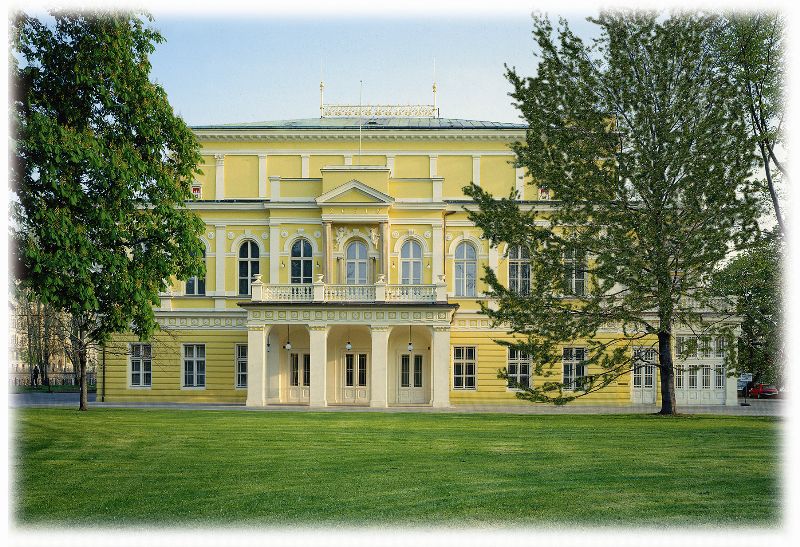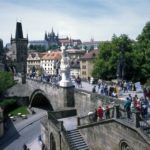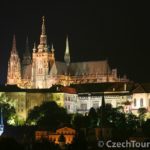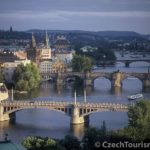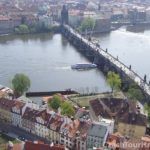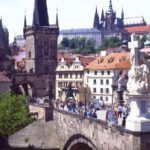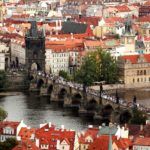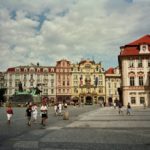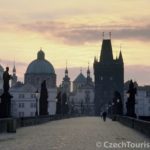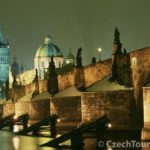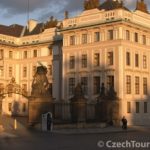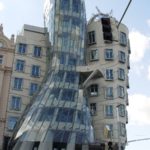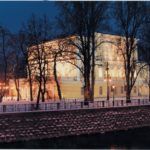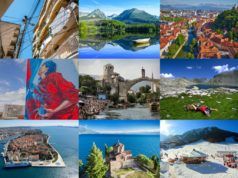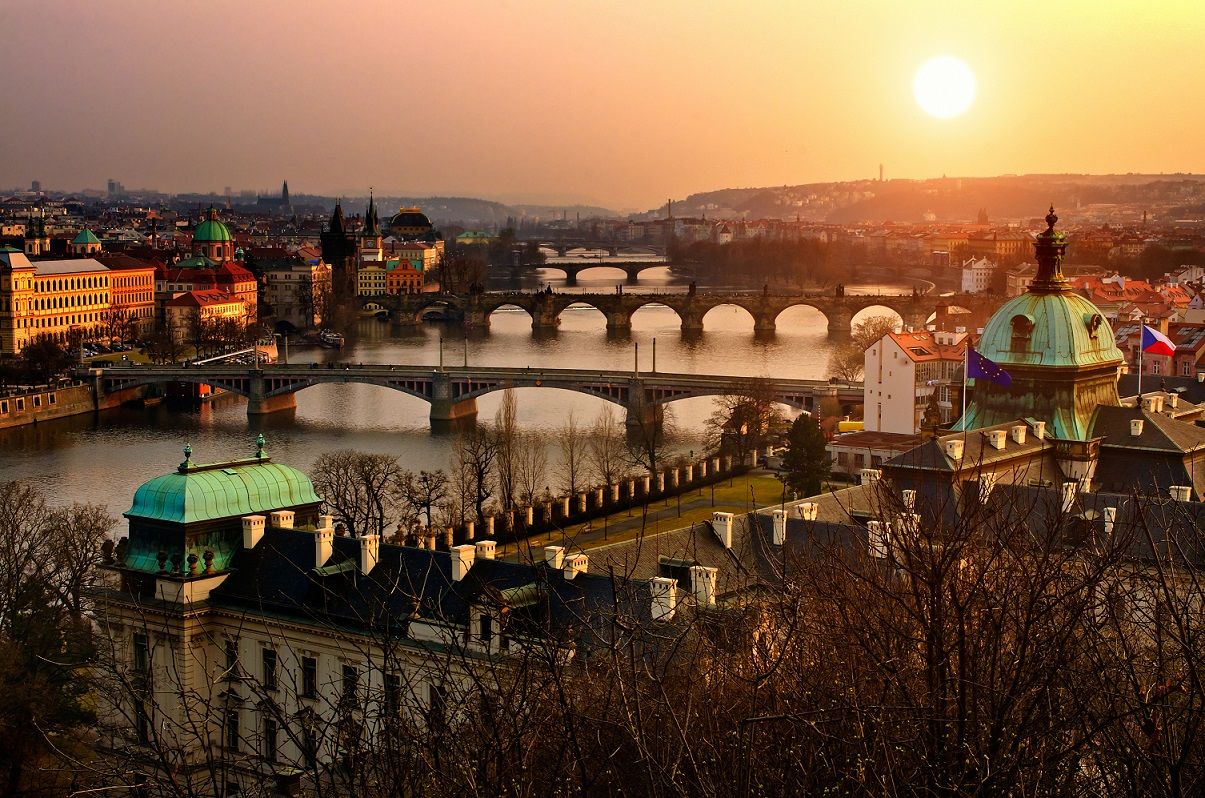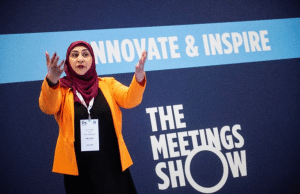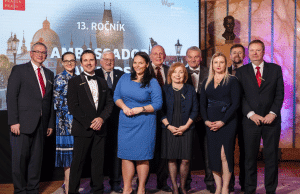Even before the dissolution of Czechoslovakia, my first major trip was to the then East of Europe, to Prague. The monotony and grayscale of the life then, upon the collapse of the Soviet empire, did not spoil a great first impression. Perhaps because of its Slavic soul the city was especially close to my heart. The city is of special importance for the Slavs and is a kind of South Slavic Paris, in which different kinds of stories mix and combine that give rise to conflicting historical memories and feelings. Paris with a Slavic soul – we love it because it is more our own, and partly also because of Slovenian master architect Jože Plečnik, who renewed the Hradcany, the largest fortress castle in the world. 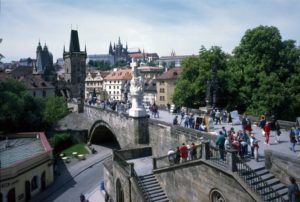
I am especially fond of winter visits to Prague, as the teeming masses of tourists are quite diluted at this time and the real charm and beauty of the city can be seen. Memories of Prague, of cars all the same, of a city with very few pedestrians on the streets and people who stand in front of stores, of no tourist crowds, of Kafka. Of the very special atmosphere of the city that has something extra, something that makes it timeless.
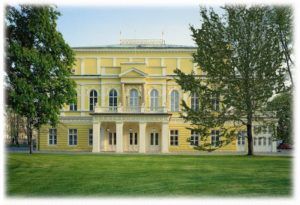 During World War II, Prague remained almost intact because of the the unconcealed sympathy that Hitler cultivated towards the city. During the occupation he wanted to create a museum of an exterminated nation in the old Jewish district. Thankfully he did not succeed and today we can see six synagogues and the Old Jewish cemetery.
During World War II, Prague remained almost intact because of the the unconcealed sympathy that Hitler cultivated towards the city. During the occupation he wanted to create a museum of an exterminated nation in the old Jewish district. Thankfully he did not succeed and today we can see six synagogues and the Old Jewish cemetery.
 Through the maze of streets and lanes of the old Slavic city beautiful views open up. In recent years the city has shone in all its beauty, with the lazy Vltava River meandering under the many bridges, including the famous Charles Bridge. Prague is rightly among the most beautiful European cities, with sights worth seeing at every step. Unsurprisingly, it has since 1992 been listed on the UNESCO heritage list.
Through the maze of streets and lanes of the old Slavic city beautiful views open up. In recent years the city has shone in all its beauty, with the lazy Vltava River meandering under the many bridges, including the famous Charles Bridge. Prague is rightly among the most beautiful European cities, with sights worth seeing at every step. Unsurprisingly, it has since 1992 been listed on the UNESCO heritage list.
Prague is also the economic centre of the country, which in economic terms generates a fifth of Czech GDP. On the Mercer scale of quality of living, Prague is among the highest ranked Eastern European cities. It is located 69th out of 211 cities surveyed. It is not surprising that the city is full of multinational representation, which are an important generator of congress tourism. The winner on this scale is Vienna, which is the main competitor of Prague in the meeting industry.
Prague is mostly a very safe destination. The management and tidiness of streets and buildings is at a high level. In terms of costs it is acceptable, and in some areas of the conference supply chain even very favorable. The cultural offer of the city is remarkable. Its negative aspects are how it fares in terms of traffic regulation and its relationship to the environment. In particular, better public transport, more bike lanes and a reduction of car traffic in the city would improve its general appearance. A long planned urban ring is missing.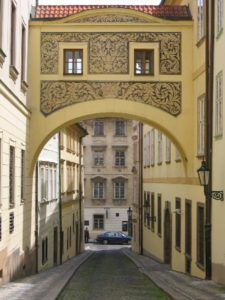
The Ruzyne airport, in 2012 renamed the Vaclav Havel Airport, is the main air hub of the country. Last year some 10.8 million passengers travelled through the airport, which positions it as an important regional hub. 49 airlines connect Prague with 132 destinations, among which are at the top spots cities of the United Kingdom, Germany, France, Russia and Italy. The new Terminal 2 is very nice and of an above average arrangement for the East European standard. In addition to the general infrastructure it is offering superior business lounges and a small conference centre, which is advanced technologically and in terms of design, as evidenced by the prestige materials used. The Continental VIP business lounge is also especially impressive.
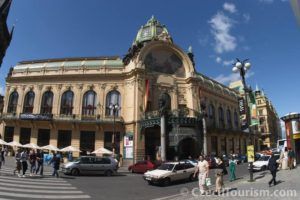 Not surprisingly, Prague last year attracted some 4.7 million tourists from around the world who needed some 12.2 million overnight stays. The annual growth of tourist arrivals is still 5%, irrespective of the global economic crisis. How good Prague tourism is can also be seen through statistics on hotel occupancy rates in the last year: on average, the occupancy of 5 stars category was 65% and 4 star hotels category 62%, with the peak in summer months. Less impressive is the falling prices of hotel services, which has happened over the last few years, but last year, prices fell by 37%. For such a quantum of tourists an extensive hotel infrastructure has been developed, with 622 tourist facilities that have 36,969 rooms. In the highest 5 star category alone there are 39 hotels with 5,121 rooms. In the four-star business category there are 174 with 15,038 rooms. Among the top class category there are some hotels that belong to the European top, like the charismatic Mandarin Oriental Hotel in the former monastery complex or the Four Seasons Hotel right on the river Vltava. You can also find pearls, such as the boutique hotel Jalta by the main square, which will take you to the days of the Cold War and is really a great example of socialist modernist architecture.
Not surprisingly, Prague last year attracted some 4.7 million tourists from around the world who needed some 12.2 million overnight stays. The annual growth of tourist arrivals is still 5%, irrespective of the global economic crisis. How good Prague tourism is can also be seen through statistics on hotel occupancy rates in the last year: on average, the occupancy of 5 stars category was 65% and 4 star hotels category 62%, with the peak in summer months. Less impressive is the falling prices of hotel services, which has happened over the last few years, but last year, prices fell by 37%. For such a quantum of tourists an extensive hotel infrastructure has been developed, with 622 tourist facilities that have 36,969 rooms. In the highest 5 star category alone there are 39 hotels with 5,121 rooms. In the four-star business category there are 174 with 15,038 rooms. Among the top class category there are some hotels that belong to the European top, like the charismatic Mandarin Oriental Hotel in the former monastery complex or the Four Seasons Hotel right on the river Vltava. You can also find pearls, such as the boutique hotel Jalta by the main square, which will take you to the days of the Cold War and is really a great example of socialist modernist architecture.
 However, tourists are not attracted only by the architectural sights and the rich hotel offer. The nightlife is varied, as the city is an epicentre of a club scene for all tastes. Prague has for many years been in the top European city break destinations, after London, Paris and Rome. It attracts eccentric Englishmen because of the stag parties and tourists from eastern countries, who come to the city for the obligatory tasting of excellent Czech beers and ‘beherovka’. Furthermore, after the liberalisation of the use of soft drugs Prague is a popular destination for mostly forbidden pleasures and now assumes primacy over Amsterdam.
However, tourists are not attracted only by the architectural sights and the rich hotel offer. The nightlife is varied, as the city is an epicentre of a club scene for all tastes. Prague has for many years been in the top European city break destinations, after London, Paris and Rome. It attracts eccentric Englishmen because of the stag parties and tourists from eastern countries, who come to the city for the obligatory tasting of excellent Czech beers and ‘beherovka’. Furthermore, after the liberalisation of the use of soft drugs Prague is a popular destination for mostly forbidden pleasures and now assumes primacy over Amsterdam.
 Congress tourism is highly positioned in Prague and according to Prague Convention Bureau data it generates between 20 to 25% of the total tourist traffic. The President of the Prague Convention Bureau, Sanjiv Suri, is a charismatic Czech entrepreneur of Indian descent. The head of the largest catering company in Prague is also an interesting character, who surprises with his positive life philosophy which he transmits to the whole city meetings industry. The CVB is excellently organised and implements all key promotional functions, among other things, the ambassador programme, which is also supported by the Mayor, Bohuslav Svoboda. A small but important victory of the Bureau is that all hotel members of the bureau are offering free internet. It is a small gesture that can create a huge difference.
Congress tourism is highly positioned in Prague and according to Prague Convention Bureau data it generates between 20 to 25% of the total tourist traffic. The President of the Prague Convention Bureau, Sanjiv Suri, is a charismatic Czech entrepreneur of Indian descent. The head of the largest catering company in Prague is also an interesting character, who surprises with his positive life philosophy which he transmits to the whole city meetings industry. The CVB is excellently organised and implements all key promotional functions, among other things, the ambassador programme, which is also supported by the Mayor, Bohuslav Svoboda. A small but important victory of the Bureau is that all hotel members of the bureau are offering free internet. It is a small gesture that can create a huge difference.
The results of all this work are very concrete. In 2011, 4,030 events were held in Prague, which were attended by 578,297 participants. This has taken Prague to sit among the first in the world on the ICCA scale, where in 2011 it was at 14th place with 694 events, most of which were ranging in size from 50 to 250 participants and half of which, as a consequence, take place in hotels (51.5%). 
Fortunately, and to the satisfaction of Prague hoteliers, Prague boasts a giant convention centre, the Prague Congress Centre, which can accommodate up to 2,800 congress participants, has a garage and an exhibition area of 13,000 m2, 20 convention halls and 50 smaller meeting rooms, all of which rank it amongst the bigger European centres. Despite the fact that the typical modernist architecture has gathered some patina, the centre is well maintained and functions well.
The centre enables Prague to organise the largest congresses, such as the Congress of ERA EDTA 2011 and EADV in 2012, with eight thousand participants. The congress centre is soundly and functionally set in the suburbs and connected with intersections and a direct tram line.
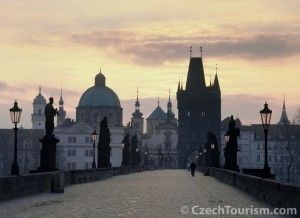 Congress facilities for mega events are also available at the Prague fair Letnaty, with the largest hall holding a maximum of 10,000 guests, as well as the historic Incheba Expo facility, with five halls for a maximum of 2,400 guests. The O2 Arena Sports Hall is also useful, with 10 halls and a capacity of 11,500 participants.
Congress facilities for mega events are also available at the Prague fair Letnaty, with the largest hall holding a maximum of 10,000 guests, as well as the historic Incheba Expo facility, with five halls for a maximum of 2,400 guests. The O2 Arena Sports Hall is also useful, with 10 halls and a capacity of 11,500 participants.
A large part of the congress offer is in convention hotels. Among the largest ones, with halls with a capacity of over 1,000 participants, are the Hilton, Clarion Congress Hotel, Top Hotel Praha & Congress Centre and Hotel Olympik Tristar. In the middle class with a capacity of up to 500 guests there are many hotels with classic multifunctional convention centres, such as the Inter Continental Hotel or Crowne Plaza.
What stands out in the whole conference offer is a number of exceptionally well preserved historical congress buildings, from Hradcany to the beautiful City Hall, with its Art Nouveau rooms that played an important role in the history of the Czech Republic. From the National Opera to the National Theatre, Žofin Palace on one of the islands in the Vltava River to the Lobkowicz Palace and its surprisingly moving story of the Lobkowicz family, which after the collapse of communism, returned from exile to their homeland, there is an outstanding concentration of congress “candies”, which make Prague so special and different from other convention destinations. 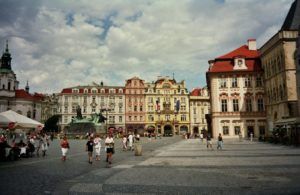
What lends additional charm to the entire destination are the Czechs. They seem to be a peaceful nation and everything goes on in a tranquil and cultural way and without the Mediterranean nervousness. After all the visits Prague it seems even more beautiful, luxurious and leaves a strong impression on the visitor. Even in the middle of the biggest tourist crowds you may find yourself in the middle of a beautiful square, in the garden of the Maltese church or enjoying magical corners at the John Lennon wall that take your breath away. Just a hop from the Intercontinental Hotel you find yourself in the middle of the Jewish quarter, or on a boat on the Vltava you can feel the spirit of Bedrich Smetana.
The seal of communism has long been shed and today it is a modern tourist metropolis with all that this brings, and what also sometimes makes them less friendly.
The spirit of Central Europe is in the best way caught in this beautiful city, which is an excellent convention destination because of its cosmopolitanism, multiculturalism, liveliness and a tireless nightlife. What is the secret of the Prague congress tourism? What are they doing differently? It is a combination of circumstances and wise development policies. Elegantly and sustainably they are working to be among the top ten European congress cities.
Destination grade: 4.50 – EXCELLENT MEETINGS DESTINATION
Grades:
5 excellent meetings destination
4 quality meetings destination
3 recommendable meetings destination
2 average meetings destination
1 so so
Individual grades:
A. Natural and cultural factors 4.4
Prague’s historic districts, Staro mesto (the Old Town), Novo mesto (the New Town), the Jewish Quarter, Hradcany and the Little Quarter form the core of an outstanding experiential diversity of the city, which for many years has been attracting a number of tourists. The city has developed on seven hills by the river Vltava. ‘Golden Prague’ is special because of its extreme concentration of architectural and historical sights in combination with landscape diversity, culture and the arts.
B. General and transport infrastructure 4.2 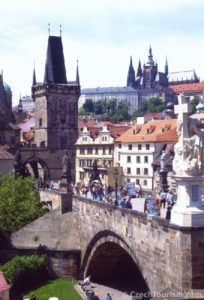
Safety, excellent infrastructure, professional environment with an educated workforce, affordability, tradition and high quality of life are the main attributes of the general infrastructure of Prague. Also important for the development of congress tourism are the solid airline availability and regulation of the Vaclav Havel airport ,with a new Terminal 2 that is becoming an important aviation hub of the region.
C. Tourist infrastructure 4.7
The Czech capital has in recent years established itself as one of the most visited European tourist destinations. In the city everything is therefore subordinate to tourists with an almost pilgrimage-like surge in high season. However, the city retains its charm and offers a diverse and mainly high quality tourist infrastructure. Prague is a room with a view.
D. Meetings infrastructure 4.6
A complex and comprehensive offer, in which a remarkable number of world-class historic congress venues stand out. It is the first meeting point of the East European meetings industry that with further development is mixing it up with such first category destinations as Vienna, Berlin and Barcelona. It is the city in which conference participants will feel good.
E. Subjective grade 4.6
The city with its rich cultural heritage, friendliness of locals and countless congress options anchors deep in the heart. Every street and house tells its own story, which gives the city a special touch. Prague maintains and builds on its high-quality romantic reputation.
Comparison with the region:
Prague has for a long time not been an Eastern European gem, but a true European tourist metropolis with a diverse and comprehensive offer, luxury hotels and sometimes too high prices. The story is reminiscent of Škoda, of which the Czechs are very proud and is one of the oldest automotive brands in Europe. Reputable, solid and reliable pre-war limousines were after the war changed by cars that were behind the times. Today, Škoda shines again and again puts the Czech manufacturer where it once was. The same can be said for the meetings industry, where Prague began to seriously falter against the locations top of the European league. If we look at the position of Prague regionally, Prague will not take primacy in the region over Vienna, but it certainly has all the conditions to remain for a long time the first congress destination among East European capitals.
Cool meetings:
CZECH KNEDLIČKI – bread dumplings, which are mandatorily washed down with some of the excellent Czech beer. There is a legend that Prague got its name Golden Prague because of the beer. Anyone who has not eaten Czech knedlički with goulash and drank a mug of beer, has not properly been in Prague.
EUROPEAN GREEN CITIES INDEX 24th place (out of 30)
49.78 points out of 100
CO2 emissions per head: 8.05 tonnes
Percentage of renewable eneregy consumed: 1.02 %
European Green City Index measures and ranges sustainable operation of 30 main European cities and takes into account 30 individual indicators. More at: http://www.siemens.com/entry/cc/en/greencityindex.htm
Photos copyright pragueconvention.cz


